We love our new rescue Great Pyrenees dog Ruby and did from the moment we laid eyes on her but as we navigate life with Ruby we have now had some time to consider are Great Pyrenees a good family dog?
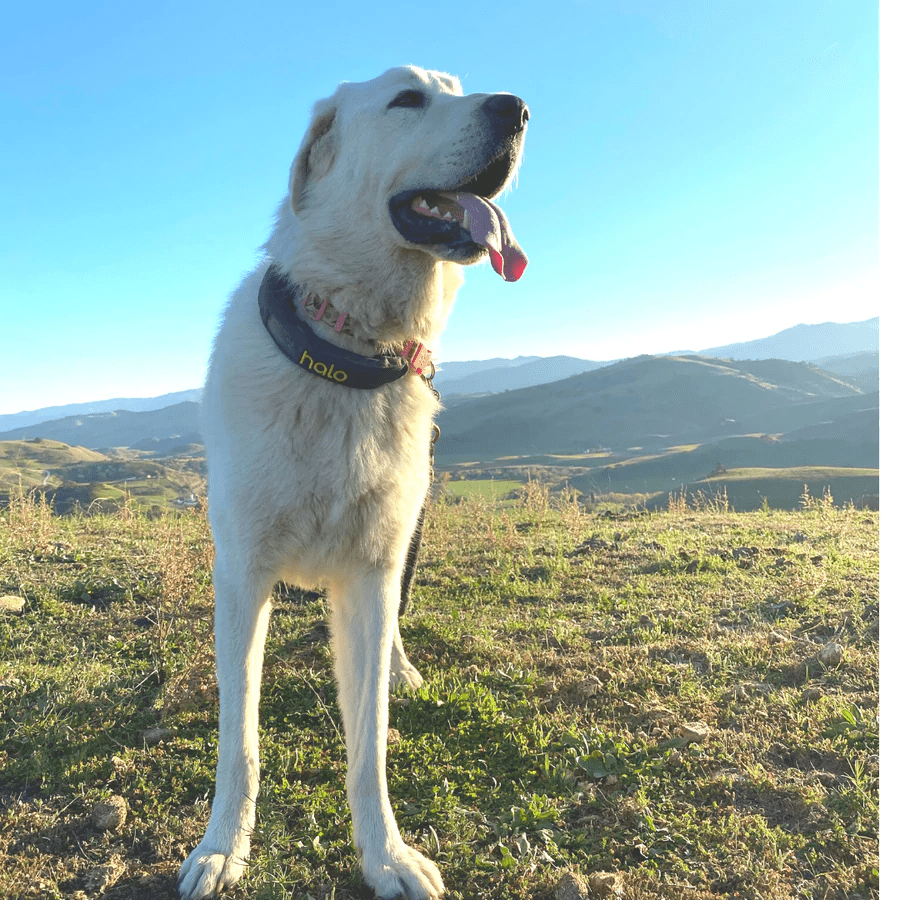
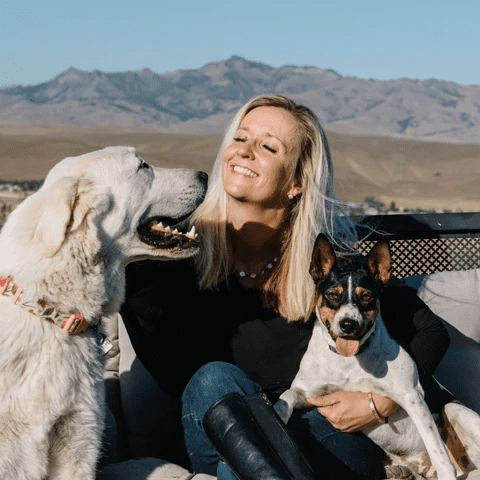
Great Pyrenees can be great family dogs in the correct environment. Great Pyrenees are boundary dogs and working dogs and need to work or they will penetrate the boundary or get into other shenanigans. They are also hairy and can get very dirty but they also have an incredible temperament making them a great family dog in the right environment.
However, you will note that we did not initially include Great Pyrenees on our list of Dogs that Families Love since there are many other considerations families should make before getting a Great Pyrenees.
Great Pyrenees Temperament
Many people wonder if Great Pyrenees have a good temperament.
When we rescued Ruby I did a lot of research about Great Pyrenees and there were very few reports of a dog with a bad temperament. There were other reported issues such as barking and escaping but due to the temperament assurances we moved ahead.
Great Pyrenees have a wonderful temperament and are extremely lovable and loyal. They are:
- Trained to guard livestock
- independent thinkers, and
- not easily obedience-trained.
The other thing to note is that due to their guard dog protector instincts they are very headstrong. They are not a larger version of a golden retriever.
The National Pyr Organization indicates that Owners need to understand and have patience with to train a dog who feels he knows better than you do but will respond positively to the loving bond they develop with a strong and confident pack leader, aka the “alpha.
What Were Great Pyrenees Bred For?
Great Pyrenees were bred for livestock protection. Great Pyrenees guarded sheep in France and Spain as early as history recorded. According to Homestead on the Range, besides guarding sheep, the Great Pyrenees had an important role in protecting the châteaux as early as the 1400s.
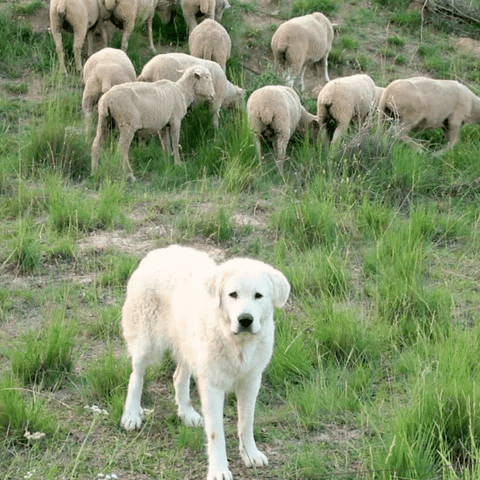
The Great Pyrenees officially became the breed of nobility later, when Louis XIV took one home as a pet. Louis named the Great Pyrenees the Royal Dog of France in 1675, making it a popular choice for many aristocrats.
The Great Pyrenees remains the most popular sheep and livestock protector today along with being an important family protector as well. When we have a campfire on the ranch, the other dogs will try to sit in our laps or rest near the fire. Ruby stays on the outside of the group keeping watch.
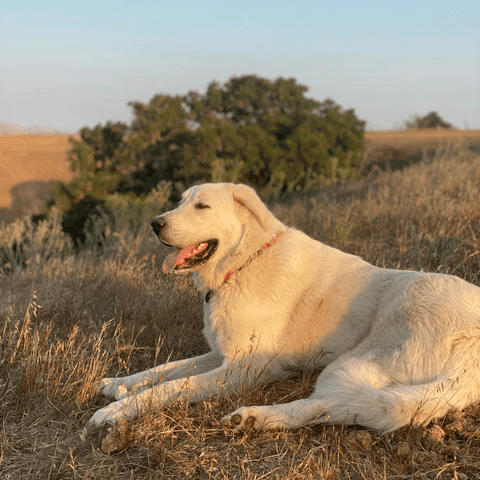
Can Great Pyrenees Live in an Apartments or other Urban Settings?
We happen to have a large ranch which is the only reason why we considered this breed.
Great Pyrenees have successfully navigated apartment and city life but it is not natural and from my experience Great Pyrenees would in general be happier with a very large space and a job. In an urban setting they will soon get bored and may be destructive or bark.
I have lived with a Great Dane on a very large yacht for multiple years of her life. She was perfectly happy with walks and zoomies and then couch time.
Although I admittedly have never tried to live with a Great Pyrenees in an urban or apartment setting I have had friends that have tried. Despite their love, use of bark collars, electrifying the siding of their house they still needed to find a rural home for their beloved family member.
It was not for lack of trying but their other four dogs thrived in their small yard but their Great Pyrenees was destructive to say the least. He is now thriving on a fully fenced farm.
We keep Ruby very busy but even with 80 acres and us to protect she seems to need some other job and are now considering getting sheep to keep her happy. Great Pyrenees may thrive in an urban setting with lots of exercise but it just does not seem to be inline with their breed characteristics.
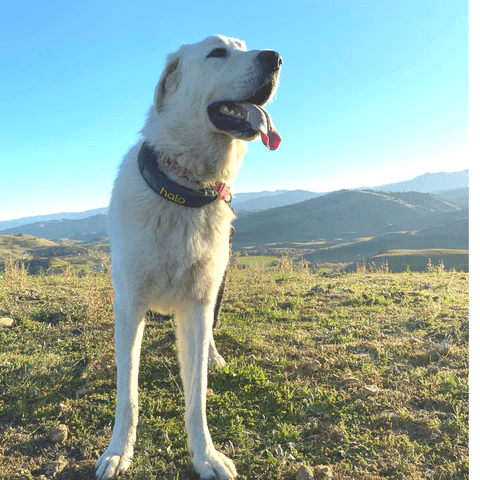
How Big Are Great Pyrenees?
Great Pyrenees are considered a large breed dog seemingly larger due to their long and fluffy hair. They are very strong and as high as 32 inches and about 100 pounds.
According to the AKC Pyrs are big, immensely strong mountain dogs. The AKC Great Pyrenees Breed Standards provide that – The height at the withers ranges from 27 to 32 inches for dogs and from 25 to 29 inches for bitches. A 27 inch dog weighs about 100 pounds and a 25 inch bitch weighs about 85 pounds. Weight is in proportion to the overall size and structure.
Are Great Pyrenees Good With Kids?
Yes, Great Pyrenees are great with kids. Due to their protective nature Great Pyrenees are great with kids and have the highest rating on the AKC Affectionate with Family Score.
We were warned when we got Ruby that she may be food aggressive and it is a trait with the breed. With children Great Pyrenees appear to love the attention and are very affectionate and gentle, however, I am still careful with other dogs and feeding time with the kids but she will climb in bed with them whenever she gets a chance and is always up for a big cuddle.
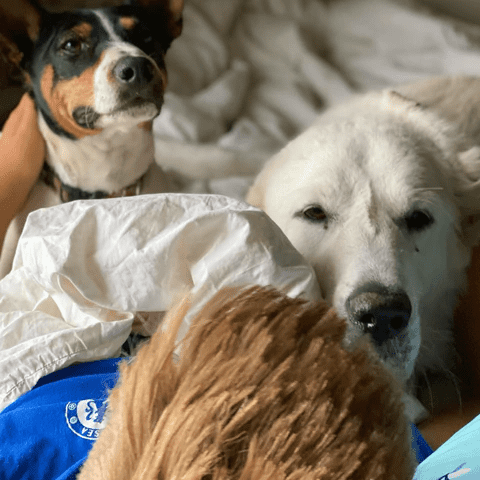
What Should a Family Consider when Deciding to Get a Great Pyrenees?
We, of course, love that we chose the Great Pyrenees for one of our many family dogs. However, it has not been without issue. Here are some other considerations straight from The National Pyr Organization:
- Like most livestock guardian and dominant breeds, Great Pyrenees usually don’t get along with dogs of the same sex as adults.
- A Pyr off-leash, outside of a fenced area, is called “dis-a-Pyr” they need a high fenced area to live.
- Pyrs drool, some more than others, males usually more than females.
- Pyrs may dig deep craters in your yard to keep cool, even in expensive landscaping.
- Pyrs bark as part of their guarding routine, all Pyrs bark as part of their natural behavior. Barking is their first line of defense against predators.
- Pyrs are nocturnal and will still be on guard (and barking) at night, just as they would be as flock guards.
- Pyrs have thick fur and shed (or “blow”) their undercoats twice a year. Owners need to keep up with brushing to avoid matting and skin problems.

